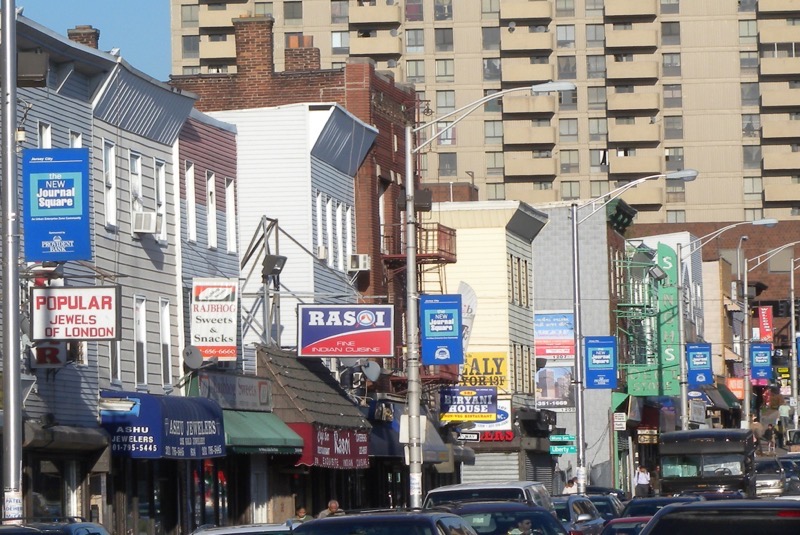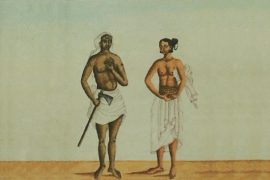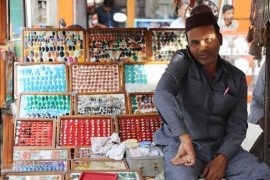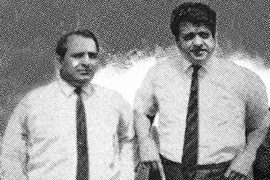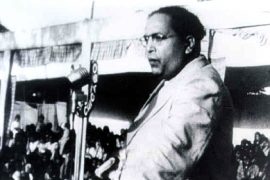Restaurants offering international cuisines are plentiful in Manhattan’s East Village. There are several old-school Italian restaurants where you may enjoy genuine red sauce and cannolis. Little India, a block on the 6th Street between 1st and 2nd Avenues, is packed with shops offering mouthwatering curries. It is another element of the East Village’s delectable culinary history. Earlier, the street was known by the moniker ‘Curry Row’; sometimes, it is referred to as such even today. In his story for the New York Times, the journalist Francis Lam asks:
Curtains of chile-pepper lights that look like Christmas at the bordello, sitar players in every window, seven courses of food for $7.95…How did a clone colony of Indian restaurants sprout on one random block in the East Village? Is it true that they all share a kitchen? And why are they lit like a rager in the art-school darkroom?
It all started in 1968. Said Manir Ahmed and his five brothers – Bangladeshi exchange students – who yearned for home-cooked food, established their own restaurant on East 6th Street. They called it Shah Bagh. They lived on the Lower East Side; some studied engineering, accounting, and business administration at New York University; others worked in different professions.
‘We found we had no place to eat the way we were used to,’ Manir Ahmed had told the New York Times in 1981. When he saw a for-sale sign in the window of a tiny Japanese restaurant on East Sixth, it looked like a message from heaven.
The $2,000 Japanese restaurant came with tables and equipment, including ovens, stoves, refrigerators, and everything else. But the brothers could only come up with $1,800. Fortunately, the seller agreed. They were attracted to the region because of the cheap rentals, which were just $75 per month at the time.
“We had a place to cook our food and to get together every day,” said Manir Ahmed. Moin, the eldest of the six brothers, a competent chef, mostly made the meals. The brothers would sit together, talking, studying, and reading while eating vindaloo, curry, and bhuna masala.
‘But people kept knocking on the door or walking in thinking we were a restaurant, so we thought maybe we should open a restaurant.’ That’s how Little India or the Curry Row came to be. Manir was the owner, and Moin was the first chef when Shah Bag opened at 320 East Sixth Street a few months later.
The Beatles were in the midst of their sitar phase in 1968. Ahmed understood that the hippie crowd would be willing to pay for chicken curry from the country of the yogis. They soon started earning money by cooking for the general public in the United States.
Two years later, at No. 330, the brothers established Kismoth, dividing the expenses and appointing Hasib, 42, as the owner. When they managed to get bay leaf, cardamom, and ground ginger, they started making biryani with Chicken and rice, and the cooking took a more traditional tone.
In 1972, the brothers purchased No. 330 and rented it to Hiro, a Japanese restaurant, ‘for variety.’ Then, in 1976, one of the servers at Shah Bag established the Romna at 322 East Sixth Street. It did not end there. The brothers added three additional restaurants in 1978 and three more in 1979.
Ahmed’s eateries sprung up as relatives and acquaintances from Bangladesh sought a piece of the action. East 6th Street surged in the early 1980s, thanks partly to relaxed Asian immigration rules, which attracted thousands of Bangladeshis to New York.
The restaurants on East Sixth Street functioned as a cooperative. They shared the expense of imported spices, lent cooks to one another and swapped staff. They purchased rice in bulk by the carloads; they bought parathas, nans, and other bread from bakeries on Canal Street.
The brothers helped one another and their relatives in any way they could. ‘We help each other – my brothers, my sister, my brothers-in-law, my sisters-in-law, we all help,’ Manir Ahmed had said. ‘If we lend money, we lend it free. Our help is for each other, free.’ By 1981, eighteen members of his family were in business.
‘Once a month, we sit down together in one house. We have dinner, and we talk. Who needs money? Whose restaurant is doing well? Whose is not? I am the chairman, and although I give the orders for the family, any brother has the right to overrule me,’ he had added.
Three decades later, Lam asked one of the owners why the Street was known as “Little India” when most of the owners were Bangladeshi. For the same reason, the restaurants served beef and not pork. ‘We had to call the restaurants Indian because nobody knew what Bangladesh was,’ he had said. However, soon, Indian-owned restaurants also sprang up. The famous Brick Lane Curry House was Indian owned. By the 1990s, this one block had 30 Bengali/Indian restaurants.
Today, very few restaurants remain open on East 6th Street: gentrification and increasing costs led to the closure of many of these eateries. One of the reasons why Little India is very popular is because many of the restaurants have an unusual policy: they allow you to Bring your Own Booze (BYOB), a rare feature in Manhattan and one that will hopefully help keep the surviving local businesses afloat.
-30-
Copyright©Madras Courier, All Rights Reserved. You may share using our article tools. Please don't cut articles from madrascourier.com and redistribute by email, post to the web, mobile phone or social media.Please send in your feed back and comments to editor@madrascourier.com

